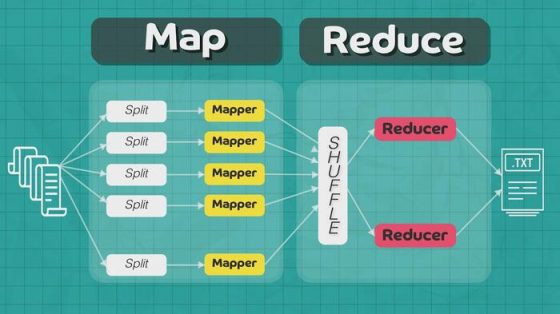让我们来看看你有多么了解电脑!所有这些程序的数值都是可变的。你的任务是:在程序花费 1 秒运行之前猜测它的大概值。
你并不需要猜出一个精确值:选择范围在 1 和 10 亿之间。你只要能猜出正确的数量级,就算正确!下面是一些注意事项:
- 如果答案是 38,000,那么你选择 10,000 或 100,000,我们就认为都是正确答案。误差只要在 10 倍范围内就 ok:)
- 我们知道不同的计算机有不同的磁盘、网络和 CPU 速度!我们会告诉运行 10 次/秒和 10 万次/秒的代码之间的差别。更新的电脑不会让你的代码运行速度快 1000 倍:)
- 也就是说,所有这一切都是运行在一台新的拥有一个快速的 SSD 和一个凑合的网络连接的笔记本电脑上的。 C 代码用 gcc -O2 编译。
祝你好运!

欢迎来到第一个程序!这一个只是让你练练手的:1 秒能完成多少循环? (结果可能比你想象得更多!)
猜猜下面的程序每秒执行多少次循环:
#include <stdlib.h>
// Number to guess: How many iterations of
// this loop can we go through in a second?
int main (int argc, char **argv) {
int NUMBER, i, s;
NUMBER = atoi (argv[1]);
for (s = i = 0; i < NUMBER; ++i) {
s += 1;
}
return 0;
}
准确答案:550,000,000
猜猜下面的程序每秒执行多少次循环:
#!/usr/bin/env python
# Number to guess: How many iterations of an
# empty loop can we go through in a second?
def f (NUMBER):
for _ in xrange (NUMBER):
pass
import sys
f (int(sys.argv[1]))
准确答案:68,000,000
当我看着代码的时候,我想的是 1 毫秒完成多少次——我以为是微不足道的,但事实是,即使是 Python,你也可以在 1 毫秒的时间内执行 68,000 次空循环迭代。
下面让我们来探讨一个更接近现实的用例。在 Python 中字典几乎是无处不在的,那么在 1 秒时间内我们可以用 Python 添加多少元素呢?
然后再来看一个更复杂的操作——使用 Python 的内置 HTTP 请求解析器来解析请求。
猜猜下面的程序每秒执行多少次循环:
#!/usr/bin/env python
# Number to guess: How many entries can
# we add to a dictionary in a second?
# Note: we take `i % 1000` to control
# the size of the dictionary
def f (NUMBER):
d = {}
for i in xrange (NUMBER):
d[i % 1000] = i
import sys
f (int(sys.argv[1]))
准确答案:11,000,000
猜猜下面的程序每秒处理多少次 HTTP 请求:
#!/usr/bin/env python
# Number to guess: How many HTTP requests
# can we parse in a second?
from BaseHTTPServer import BaseHTTPRequestHandler
from StringIO import StringIO
class HTTPRequest (BaseHTTPRequestHandler):
def __init__(self, request_text):
self.rfile = StringIO (request_text)
self.raw_requestline = self.rfile.readline ()
self.error_code = self.error_message = None
self.parse_request ()
def send_error (self, code, message):
self.error_code = code
self.error_message = message
request_text = """GET / HTTP/1.1
Host: localhost:8001
Connection: keep-alive
Accept: text/html,application/xhtml+xml,application/xml;q=0.9,image/webp,*/*;q=0.8
Upgrade-Insecure-Requests: 1
User-Agent: Mozilla/5.0 (Macintosh; Intel Mac OS X 10_10_5) AppleWebKit/537.36 (KHTML, like Gecko) Chrome/45.0.2454.85 Safari/537.36
Accept-Encoding: gzip, deflate, sdch
Accept-Language: en-GB,en-US;q=0.8,en;q=0.6
"""
def f (NUMBER):
for _ in range (NUMBER):
HTTPRequest (request_text)
import sys
f (int(sys.argv[1]))
准确答案:25,000
我们每秒可以解析 25,000 个小的 HTTP 请求!有一件事我要在这里指出的是,这里请求解析的代码是用纯 Python 编写的,而不是C。
接下来,我们要试试下载网页与运行 Python 脚本!提示:少于 1 亿:)
猜猜下面的程序每秒可以完成多少次 HTTP 请求:
#!/usr/bin/env python
# Number to guess: How many times can we
# download google.com in a second?
from urllib2 import urlopen
def f (NUMBER):
for _ in xrange (NUMBER):
r = urlopen ("https://google.com")
r.read ()
import sys
f (int(sys.argv[1]))
准确答案:4
猜猜下面的程序每秒可以执行多少次循环:
#!/bin/bash
# Number to guess: How many times can we start
# the Python interpreter in a second?
NUMBER=$1
for i in $(seq $NUMBER); do
python -c '';
done
准确答案:77
启动程序实际上昂贵在其本身,而不是启动 Python。如果我们只是运行/bin/true,那么 1 秒能做 500 次,所以看起来运行任何程序只需要大约 1 毫秒时间。当然,下载网页的快慢很大程度上取决于网页大小,网络连接速度,以及服务器间的距离,不过今天我们不谈网络性能。我的一个朋友说,高性能的网络完成网络往返甚至可能只要 250 纳秒(!!!),但这是在计算机位置更相邻,硬件更好的情况下。
1 秒时间能够在磁盘中写入多少字节?我们都知道写到内存中时速度会更快,但是究竟会快多少呢?对了,下面的代码运行在带有 SSD 的计算机上。
猜猜下面的程序每秒可以写入多少字节数据:
#!/usr/bin/env python
# Number to guess: How many bytes can we write
# to an output file in a second?
# Note: we make sure everything is sync'd to disk
# before exiting
import tempfile
import os
CHUNK_SIZE = 1000000
s = "a" * CHUNK_SIZE
def cleanup (f, name):
f.flush ()
os.fsync (f.fileno ())
f.close ()
try:
os.remove (name)
except:
pass
def f (NUMBER):
name = './out'
f = open (name, 'w')
bytes_written = 0
while bytes_written < NUMBER:
f.write (s)
bytes_written += CHUNK_SIZE
cleanup (f, name)
import sys
f (int(sys.argv[1]))
准确答案:342,000,000
猜猜下面的程序每秒可以写入多少字节数据:
#!/usr/bin/env python
# Number to guess: How many bytes can we write
# to a string in memory in a second?
import cStringIO
CHUNK_SIZE = 1000000
s = "a" * CHUNK_SIZE
def f (NUMBER):
output = cStringIO.StringIO ()
bytes_written = 0
while bytes_written < NUMBER:
output.write (s)
bytes_written += CHUNK_SIZE
import sys
f (int(sys.argv[1]))
准确答案:2,000,000,000
下面轮到文件了!有时候,运行一个大型的 grep 之后,它可以永恒跑下去。在 1 秒时间内,grep 可以搜索多少字节?
请注意,在这么做的时候,grep 正在读取的字节已经在内存中。
文件列表同样需要时间!1 秒能列出多少文件?
猜猜下面的程序每秒可以搜索多少字节的数据:
#!/bin/bash # Number to guess: How many bytes can `grep` # search, unsuccessfully, in a second? # Note: the bytes are in memory NUMBER=$1 cat /dev/zero | head -c $NUMBER | grep blah exit 0
准确答案:2,000,000,000
猜猜下面的程序每秒可以列出多少文件:
#!/bin/bash # Number to guess: How many files can `find` list in a second? # Note: the files will be in the filesystem cache. find / -name '*' 2> /dev/null | head -n $1 > /dev/null
准确答案:325,000
序列化是一个普遍要花费大量时间的地方,让人很蛋疼,特别是如果你反复结束序列化/反序列化相同数据的时候。这里有几个基准:转换 64K 大小的 JSON 格式数据,与同样大小的 msgpack 格式数据。
猜猜下面的程序每秒可以执行多少次循环:
#!/usr/bin/env python
# Number to guess: How many times can we parse
# 64K of JSON in a second?
import json
with open ('./setup/protobuf/message.json') as f:
message = f.read ()
def f (NUMBER):
for _ in xrange (NUMBER):
json.loads (message)
import sys
f (int(sys.argv[1]))
准确答案:449
猜猜下面的程序每秒可以执行多少次循环:
#!/usr/bin/env python
# Number to guess: How many times can we parse
# 46K of msgpack data in a second?
import msgpack
with open ('./setup/protobuf/message.msgpack') as f:
message = f.read ()
def f (NUMBER):
for _ in xrange (NUMBER):
msgpack.unpackb (message)
import sys
f (int(sys.argv[1]))
准确答案:4,000
数据库。没有任何类似于 PostgreSQL 花里胡哨的东西,我们做了 2 份有 1000 万行数据的 SQLite 表,一个是有索引的,另一个是未建索引的。
猜猜下面的程序每秒可以执行多少次查询:
#!/usr/bin/env python
# Number to guess: How many times can we
# select a row from an **indexed** table with
# 10,000,000 rows?
import sqlite3
conn = sqlite3.connect ('./indexed_db.sqlite')
c = conn.cursor ()
def f (NUMBER):
query = "select * from my_table where key = %d" % 5
for i in xrange (NUMBER):
c.execute (query)
c.fetchall ()
import sys
f (int(sys.argv[1]))
准确答案:53,000
猜猜下面的程序每秒执行多少次查询:
#!/usr/bin/env python
# Number to guess: How many times can we
# select a row from an **unindexed** table with
# 10,000,000 rows?
import sqlite3
conn = sqlite3.connect ('./unindexed_db.sqlite')
c = conn.cursor ()
def f (NUMBER):
query = "select * from my_table where key = %d" % 5
for i in xrange (NUMBER):
c.execute (query)
c.fetchall ()
import sys
f (int(sys.argv[1]))
准确答案:2
下面要说 Hash 算法!在这里,我们将比较 MD5 和 bcrypt。用 MD5 你在 1 秒时间内可以哈希到相当多的东西,而用 bcrypt 则不能。
猜猜下面的程序每秒可以哈希多少字节的数据:
#!/usr/bin/env python
# Number to guess: How many bytes can we md5sum in a second?
import hashlib
CHUNK_SIZE = 10000
s = 'a' * CHUNK_SIZE
def f (NUMBER):
bytes_hashed = 0
h = hashlib.md5()
while bytes_hashed < NUMBER:
h.update (s)
bytes_hashed += CHUNK_SIZE
h.digest ()
import sys
f (int(sys.argv[1]))
准确答案:455,000,000
猜猜下面的程序每秒可以哈希多少字节的密码:
#!/usr/bin/env python
# Number to guess: How many passwords
# can we bcrypt in a second?
import bcrypt
password = 'a' * 100
def f (NUMBER):
for _ in xrange (NUMBER):
bcrypt.hashpw (password, bcrypt.gensalt ())
import sys
f (int(sys.argv[1]))
准确答案:3
接下来,我们要说一说内存访问。 现在的 CPU 有 L1 和 L2 缓存,这比主内存访问速度更快。这意味着,循序访问内存通常比不按顺序访问内存能提供更快的代码。
猜猜下面的程序每秒可以向内存写入多少字节数据:
#include <stdlib.h>
#include <stdio.h>
// Number to guess: How big of an array (in bytes)
// can we allocate and fill in a second?
// this is intentionally more complicated than it needs to be
// so that it matches the out-of-order version
int main (int argc, char **argv) {
int NUMBER, i;
NUMBER = atoi (argv[1]);
char* array = malloc (NUMBER);
int j = 1;
for (i = 0; i < NUMBER; ++i) {
j = j * 2;
if (j > NUMBER) {
j = j - NUMBER;
}
array[i] = j;
}
printf ("%d", array[NUMBER / 7]);
// so that -O2 doesn't optimize out the loop
return 0;
}
准确答案:376,000,000
猜猜下面的程序每秒可以向内存写入多少字节数据:
#include <stdlib.h>
#include <stdio.h>
// Number to guess: How big of an array (in bytes)
// can we allocate and fill with 5s in a second?
// The catch: We do it out of order instead of in order.
int main (int argc, char **argv) {
int NUMBER, i;
NUMBER = atoi (argv[1]);
char* array = malloc (NUMBER);
int j = 1;
for (i = 0; i < NUMBER; ++i) {
j = j * 2;
if (j > NUMBER) {
j = j - NUMBER;
}
array[j] = j;
}
printf ("%d", array[NUMBER / 7]);
// so that -O2 doesn't optimize out the loop
return 0;
}
准确答案:68,000,000
本文文字及图片出自 www.codeceo.com



















共有 1 条讨论